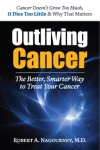Gee (G719X) Whiz: Novel Mutations and Response to Targeted Therapies
March 28, 2013 1 Comment
In a recent online forum a patient described her experience using Tarceva as a therapy for an EGFR mutation negative lung cancer. For those of you familiar with the literature you will know that Lynch and Paez both described the sensitizing mutations that allow patients with certain adenocarcinoma to respond beautifully to the small molecule inhibitors. The majority of these mutations are found in Exon 19 and Exon 21, within the EGFR domain. Response rates for the EGFR-TKI (gefitinib and erlotinib) clearly favor mutation positive patients. Depending upon the study, mutation positive patients have response rates from 53 – 100 percent, generally around 70 percent, while mutation negative response patients have a response rate of 0 – 25 percent, generally about 10 percent.
So why don’t all the mutation positive patients respond and conversely why do some mutation negative patients respond?
The story outlined in this online forum gives some insight. The individual in question carried a rare, and only recently recognized, Exon 18 mutation known as a G719X. This uncommon form of mutation had previously been unknown and few laboratories knew to test for it. Nonetheless, G719X positive patients respond to erlotinib and related agents. Indeed, there may be reason to believe that the more potent irreversible EGFR/HER2 dual inhibitor HKI-272, may be even more selective for this point mutation.
The excellent and durable response described by this individual, would not have been possible had the patient’s first physician followed the rules. That is, had her physician refused to give erlotinib to an (putatively) EGFR mutation negative patient she might well not be here to tell her story. More to the point, her good response (a clinical observation) led to the next level of investigation, namely the identification of this specific EGFR variant
The lessons from this experience are numerous. The first is that cancer biology is complex and, to paraphrase E.O. Wilson, was not put on earth for us to necessarily figure it out. The second, is that molecular biologists can only seek and identify that which they know about apriori. To wit, if you don’t know about it (G719X) and you don’t have a test for it, and you don’t know to look for it, then it’s a virtual certainty that you aren’t going to find it.
The premise of our work at Rational Therapeutics is that the observation of a biological signal identifies a candidate for therapy whether we understand or recognize the target. Crizotinib was originally developed as a clinical therapy for patients who carried the CMET mutation. Serendipity led to the recognition that the responding subpopulation was actually carrying a heretofore-unrecognized ALK gene rearrangement. Sorafenib was originally evaluated for the treatment of BRAF mutation positive diseases. Yet it was the drug’s cross-reactivity with the VGEF tyrosine kinases that lead to its broad clinical applications. Each of these phenomena represents accidental successes. Were it not for the clinical observation of response in patients, the investigators conducting these trials would have been unlikely to make the discoveries that today provide such good clinical responses in others.
To put it quite simply, these patients and their disease entities educated the molecular biologists.
When we first identified lung cancer as a target for gefitinib, and began to administer the closely related erlotinib to lung cancer patients, neither Lynch nor Paez had identified the sensitizing EGFR mutations. That had absolutely no impact upon the excellent responses that we observed. It didn’t matter why it worked, but that it worked. While the EGFR story has now been well-described, might we not use functional analytical platforms (functional profiling) to gain insights into the next, and the next generation of drugs and therapies that target pathways like MEK, ERK, SHH, FGFR, PI3K, etc., etc., etc. . . .



